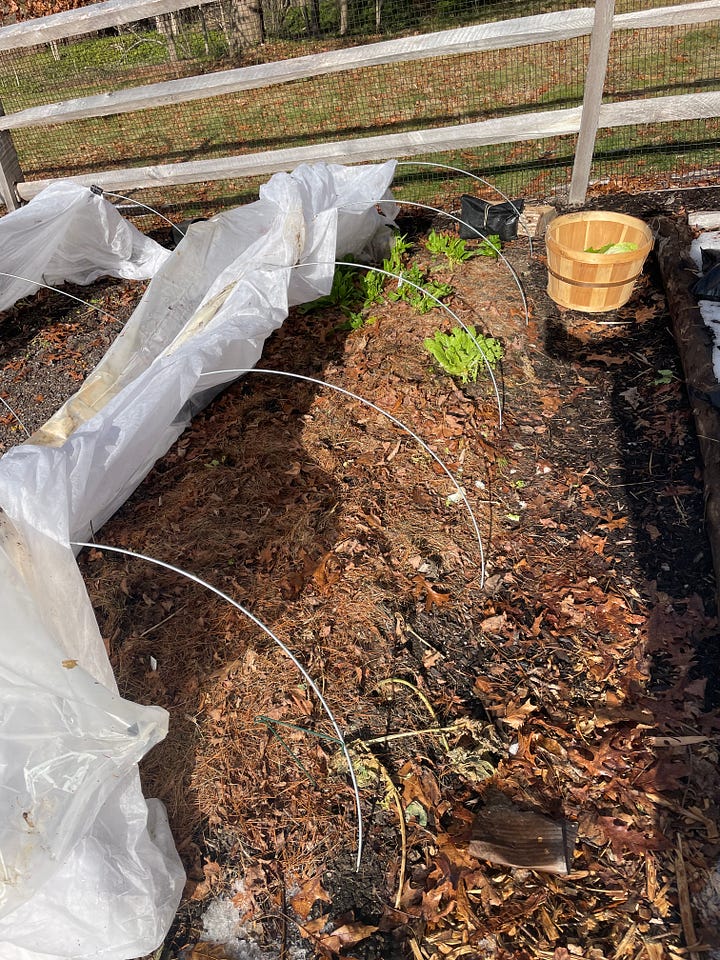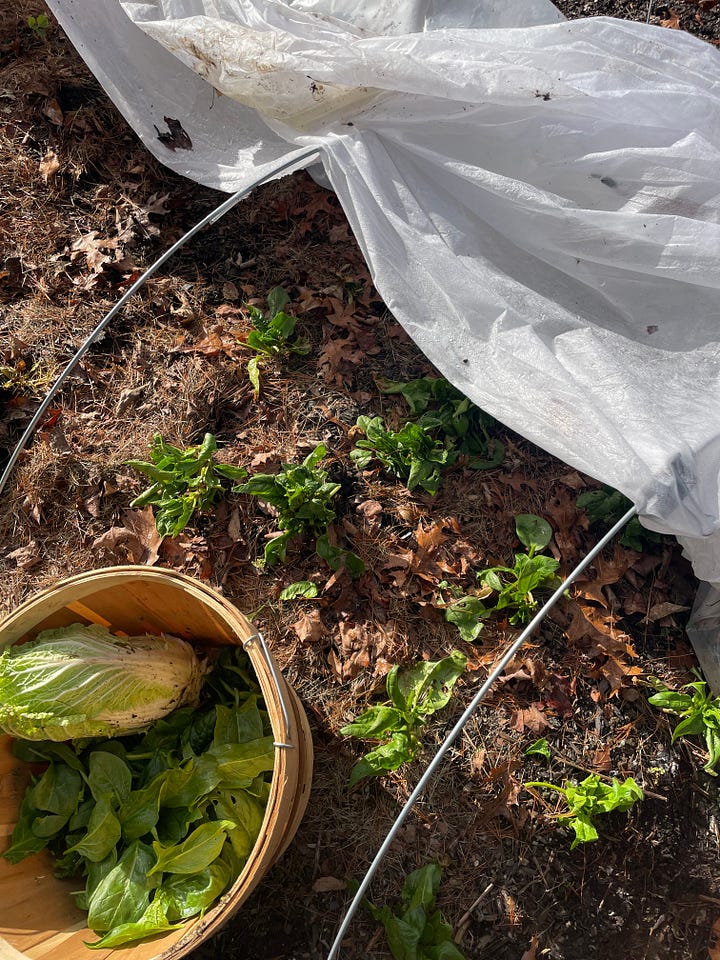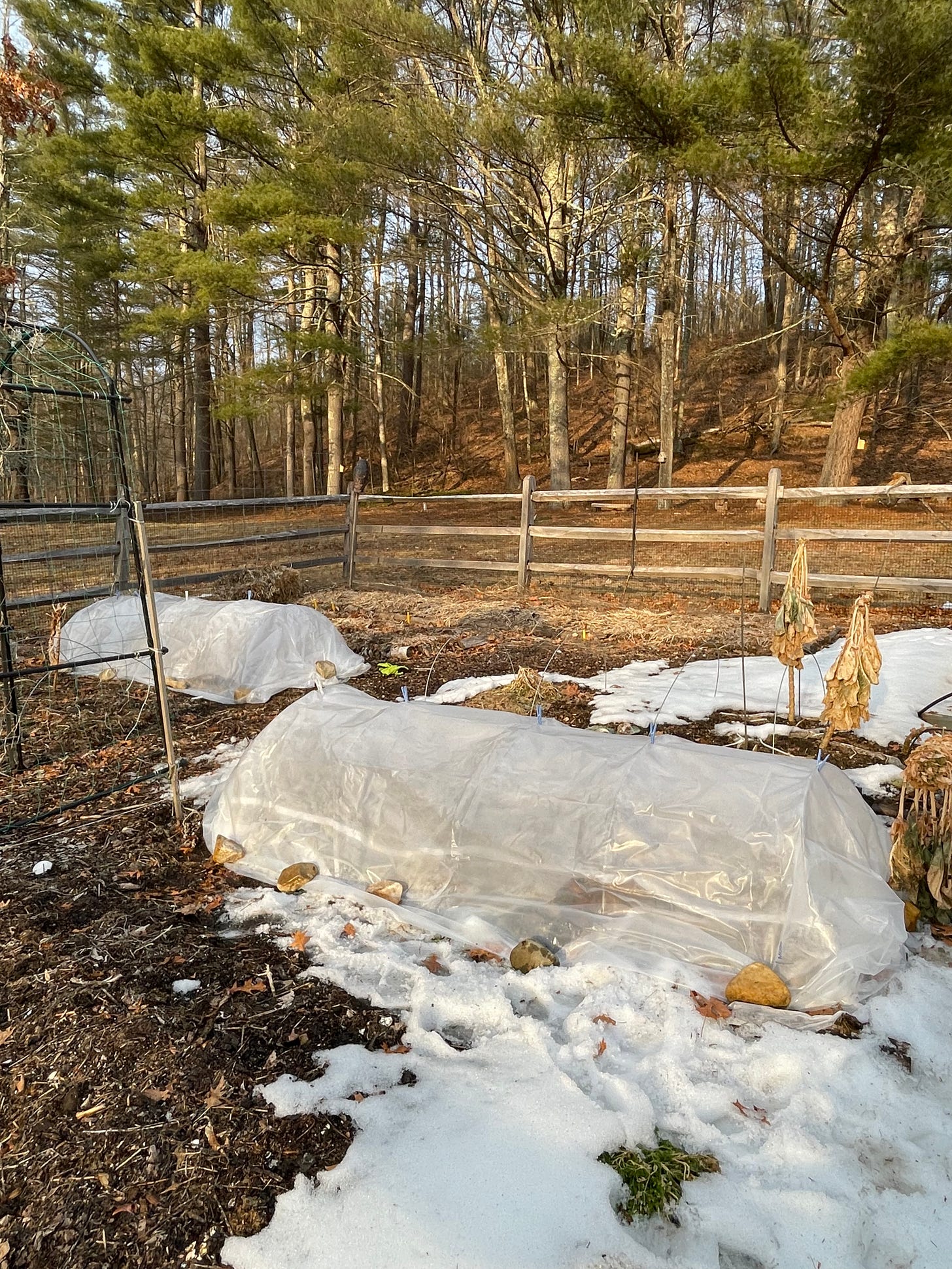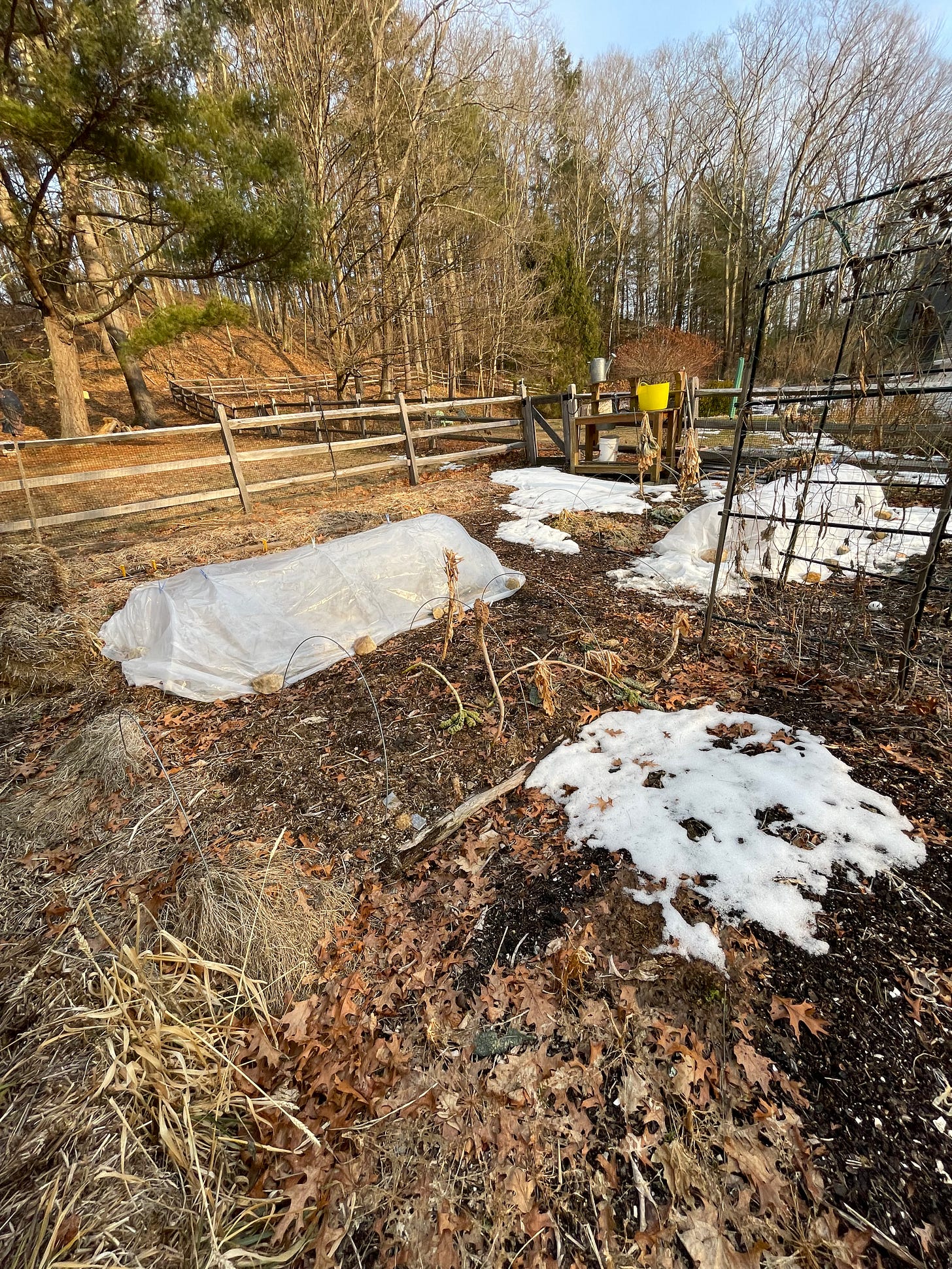Bending the zone in a vegetable garden
There are many ways to extend the growing season beyond the confines of spring to summer and expand your harvest in the process.
The season for growing vegetables traditionally runs from around the time of your region’s last-frost date in spring through your first-frost date in mid-fall. Several years ago I began trying to stretch the growing season outside that convenient window and discovered I wasn’t alone.
Why not wait to plant our garden until sometime in April? Waiting sure beats the numb fingers, snow and ice that come with planting a month or even two months earlier. Two reasons, really. For one, it’s kind of fun. At least for me it is. I like to try to bend nature, or give it a little nudge. It’s ultimately a losing cause, but I’ve found I can push the limits at least a bit and there’s some satisfaction in that.
The other is that extending the growing season has practical benefits. As I see it, if I’m going to go to all the trouble of having a vegetable garden I might as well get as much out of it each year as I can. I started stretching the season 10 years or so ago in our garden when we lived outside Washington, D.C., albeit in notably different growing conditions than I have in the Berkshires.
Meg Cowden, who has a farm outside Minneapolis and is practiced in the art of “zone bending,” as she puts it, says in her book Plant, Grow, Harvest, Repeat: “Many seasoned gardeners believe that the growing season commences after the chance of last frost has passed. While that’s definitely true for some extremely popular main season crops intolerant of frost, on the whole this out of date belief unnecessarily abbreviates the gardening season.”
The same holds true for the back end of the season come fall. “You may think that there is only one gardening season. In fact there are three – cool, warm and cold,” says Niki Jabbour in her book, The Year-Round Gardener. Niki should know. She lives in Nova Scotia and manages to harvest plants from her garden 12 months a year.
I’ve learned from gardeners like Niki and Meg. I’ve also discovered a lot through trial and error on my own and all the stumbles and disappointments that go with it.
There are lots of ways to extend your growing season. They range from a traditional greenhouse to less expensive and low-tech methods. They include building a cold frame, stretching black plastic over your beds to warm the soil or creating mini hoop tunnels by suspending galvanized steel support wires down the length of the bed and draping clear plastic drop cloths or spun garden fabric across the top of them and down the sides. It creates a climate that can reach near tropical proportions when the sun’s out and it’s what I’ve always done.
I’ve estimated it allows me to grow in conditions two USDA zones warmer.
In D.C., which the Department of Agriculture places in Zone 7b, the average last frost date – the last day in which the temperatures fall below 32 degrees – comes about a month earlier than where I live now in zone 5b in western Massachusetts. The average first-frost date in October falls about three weeks later than here as well, meaning residents in the Washington area have a growing season at least six weeks longer.
That would seem like a good thing, and it is, except there’s a hitch. As residents of the mid-Atlantic know all too well, the delights of spring usually succumb quickly to the heat and humidity of summer. And that can come as early as mid-May.
It shortens the season for plants like lettuce, spinach or kale that thrive in cool to moderately warm temperatures but quickly stop growing or go to seed when summer weather kicks in. To extend their growing season, I planted cool-tolerant vegetables in beds covered with mini hoop tunnels as early as possible, sometimes as early as mid-February. I’d take the plastic off about six weeks later, as soon as there wasn’t much chance of another frost, and the plants would do fine until sometime in May, about when it was time to plant our tomatoes. By planting early under cover during winter, I stretched the season for cool-loving plants a good six weeks to two months and could enjoy fresh lettuce and spinach as early as the first week of April.
In western Massachusetts, my strategy’s been pretty much the same though for a different reason. While we get some heat and humidity in summer, it comes later and the levels aren’t as great as 350 miles to the south. What we confront is a much shorter growing season, so by planting under cover earlier we’re squeezing as much out of our garden as we can during those precious few warmer months.
Unlike Washington, when I tried to begin planting in mid-February, my target here is mid-March — though I may not hit it this year.
I ventured into the vegetable garden late last week week. It’s as close as I’ve come to acknowledging that spring will indeed return once again after a colder-than-normal (in 21st century terms) winter, though the ground was still frozen and dotted with patches of ice and snow.
There wasn’t much for me to do, except I did manage to cover two of the vegetable beds. I suspended sheets of 4-mil clear plastic – it’s sold in most hardware stores – over the wire hoops and anchored them around the perimeter of the 9 by 3 foot beds with stones I keep around the garden for just this purpose. The stones are heavy enough to ward off most windstorms but light enough to pick up without much trouble.
I covered the beds more than three months later than last year, when I had spinach, broccoli and cabbage planted the previous fall growing in them. We harvested spinach and cabbage in the middle of January in 2024. They were a bonus from the flip side of stretching the growing season in spring, which is extending it into fall and winter by planting cold-tolerant vegetables in late summer and protecting them under mini hoop houses once the frosty weather begins.


I didn’t manage to get the beds covered with plastic this winter, though I did stretch insulating fabric row covers over them. That insulates to a point, but not when the temperatures are dipping well below freezing for weeks at a time. When I visited the garden the other day I found my crop of late summer planted spinach had yellowed and withered, though green leaves were actually stretching out of a handful of noble plants that had endured the harsh winter with only the thin row cover over the bed.
I’m playing a little catch up. A year ago the soil inside the covered beds was 50 degrees on March 12, at least 5 degrees warmer than the soil in the uncovered beds and about 25 degrees warmer than the nighttime air temperatures. Those beds had been covered since early December, and I started planting in them on March 14.
I’m interested to see how much of a difference in soil temperature there will be this year in a couple weeks’ time. It’s supposed to get into the high 50s later this week. Once the soil temperature gets up to 50 degrees or so, I'll be able to start planting seedlings into the covered beds with confidence they’ll survive in the hoop tunnels.
With the longer days and stronger sunlight, the temperature inside the covered beds will be even greater than the temperature outdoors during daylight hours. By early April I may even have to begin venting the tunnels by peeling the plastic a bit for a few hours during daytime to make sure the heat doesn’t build up too high.
I’ve started some seeds under lights on shelves in the basement already, so here’s hoping. I’ll see how things turn out in a couple weeks.
Here’s a selection of other recent posts:
How to start seeds. Begin with good soil, water and light.
Starting seeds takes a little planning. Here’s how.
As the thaw begins, be grateful for the snow. Your plants are.
Some of my favorite seed catalogues, and what makes them special





